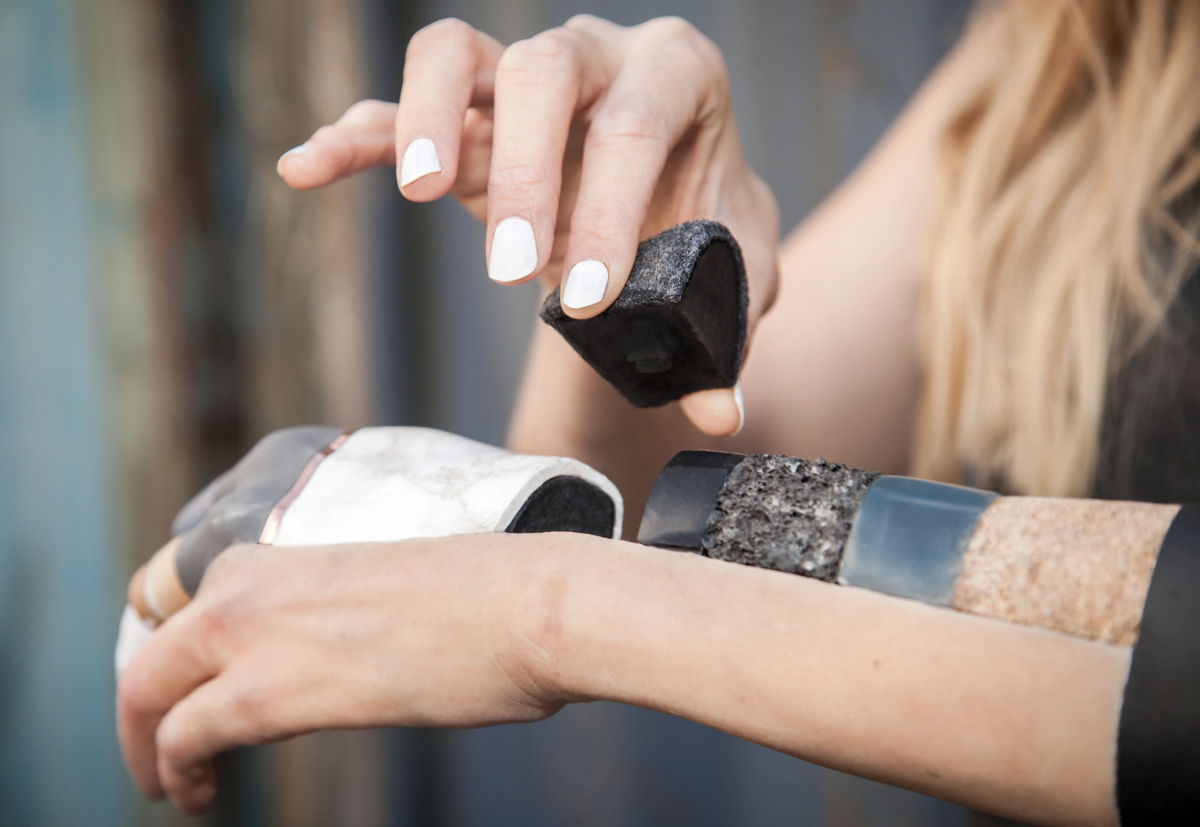New prosthetics include third thumbs and superhero skins

Many mornings, Dani Clode wakes up, straps a robotic thumb to one of her hands, and gets to work, poring through reams of neuroscience data, sketching ideas for new prosthetic devices, and thinking about ways to augment the human body. Clode works as a specialist at the University of Cambridge’s Plasticity Lab, which studies the neuroscience of assistive devices. But she also creates prosthetics, ones that often fall outside the conventional bounds of functionality and aesthetics. Her designs include a clear acrylic forearm prosthetic with an internal metronome that beats in sync with the wearer’s heart and an arm made with rearrangeable sections of resin, polished wood, moss, bronze, gold, rhodium, and cork. Clode’s current project is a “third thumb” that anyone can use to augment their grip.
Why are flood myths so common in cultures around the world?
As the anthropologist Claude Lévi-Strauss notes in “The Structural Study of Myth,” there is an “astounding similarity between myths collected in widely different regions.” From the city-states of ancient Greece to the hunter-gatherer tribes of the Amazon rainforest, cultures everywhere have preserved suspiciously similar stories. Especially common are stories about world-ending floods and the chosen individuals that managed to survive them, like the biblical Noah and Utnapishtim, the ark builder in the Epic of Gilgamesh, a text thought to be even older than the Abrahamic religions. In Aztec mythology, a man named Tata and his wife Nena carve out a cypress tree after being warned of a coming deluge by the god Tezcatlipoca, while Manu, the first man in Hindu folklore, was visited by a fish that guided his boat to the peak of a mountain. The list goes on.

The people who live inside airplanes
After losing her house to a fire, Jo Ann Ussery had a peculiar idea: to live in an airplane. She bought an old Boeing 727 that was destined for the scrapyard, had it shipped to a plot of land she already owned, and spent six months renovating, doing most of the work by herself. By the end, she had a fully functional home, with over 1,500 square feet of living space, three bedrooms, two bathrooms and even a hot tub – where the cockpit used to be. All for less than $30,000, or about $60,000 in today’s money. Although she wasn’t the first person to ever live in an airplane, her flawless execution of the project had an inspirational effect. In the late 1990s, Bruce Campbell, an electrical engineer with a private pilot license, was awestruck by her story. Campbell has now been living in his own plane – also a Boeing 727 – for over 20 years, in the woods of Hillsboro, Oregon

Julian Wasser was the ‘photographer laureate’ of Los Angeles and Hollywood
When Martin Luther King Jr. spoke at a civil rights rally in Los Angeles in 1963, Wasser was there. When the Watts neighborhood erupted in riots in 1965, Wasser captured the agony of a city at war with itself. And when Robert F. Kennedy addressed his supporters at the Ambassador Hotel in Los Angeles in 1968, Wasser photographed the young senator, just moments before his assassination. He shot a bikini-clad Anjelica Huston and Jack Nicholson horsing around in a living room; Steve McQueen on a movie set, exhaling a plume of smoke and exuding a glacial cool; and scenes from the Whiskey a Go Go, the nightclub on Sunset Boulevard. Wasser also took a famous photo of Eve Babitz, the late author and sensualist, naked and playing chess with the artist Marcel Duchamp.

Is the African continent splitting in two?
A large crack, stretching several kilometers, suddenly appeared recently in Southwestern Kenya. The crack continues to grow, and recently caused the Nairobi-Narok highway to collapse. During the initial phases of the crack, it was closely linked to tectonic activity along the East African Rift. One speculation as to why this occurred is due to erosion gullies. However, questions still linger as to why the crack occurred in the place it did, and whether it has any significant connection to the East African Rift. The East African Rift Valley stretches over 3,000 km from the Gulf of Aden in the north towards Zimbabwe in the south, splitting the African plate into two unequal parts.

The history behind Roget's Thesaurus is a lot stranger than you think
Austin Kleon writes about the famous word book: "In the words of Ted Gioia, Roget's Thesaurus is an oddball philosophy of language masquerading as a reference book. Peter Mark Roget (1779-1869) was a Victorian polymath: a doctor by trade, but he did all sorts of stuff: he was a consultant on pandemics, he wrote Encyclopedia Brittanica entries and a book about natural theology, he helped catalog several libraries, he invented the scale on the slide rule, and he may have written a paper that contributed to the birth of cinema. Oh, and he was also obsessed with chess problems. The thing he is now most famous for was actually a side project he took up in retirement, in his seventies. His whole life he’d made lists as a way of soothing himself. He carried a notebook around with him and jotted down lists of related words and phrases.

The amazing jewel caterpillar
The acraga goa moth caterpillar is also known as crystal or jewell caterpillar. It's covered with gelatinous tubercles protecting it from predators
— Massimo (@Rainmaker1973) February 16, 2023
[read more: https://t.co/v2U6Bf4j4G]
[video: https://t.co/PP57Vj791A]pic.twitter.com/REhi2mIVsO



